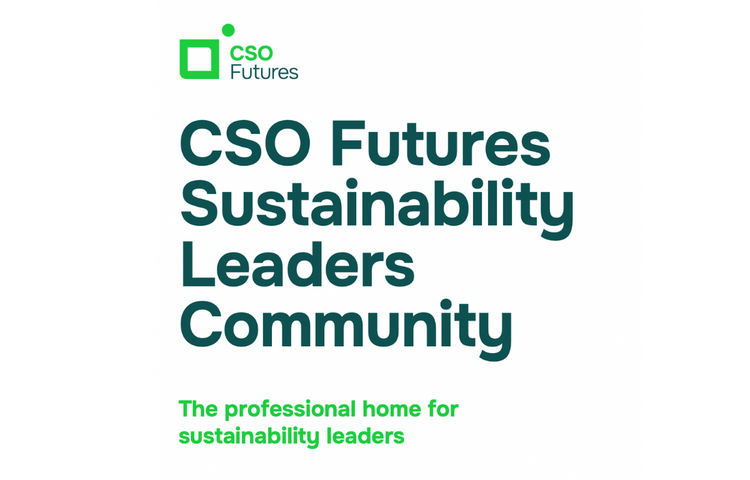How to navigate the changing world of sustainability standards

Corporate sustainability standards are at a turning point, with new regulation and voluntary frameworks bringing more granularity and consistency to reporting than ever before. In this fast-changing context, how can companies make the best use of these developments to advance their sustainability ambitions?
When Mike Penrose and his partner Alexandra Smith set out to create their sustainability management platform, FuturePlus, they wanted to make sure it was aligned with existing standards. “We didn’t want to reinvent the wheel: we pulled every standard that exists and started out with 4,500 indicators,” Penrose told CSO Futures.
The actual number of sustainability standards is hard to calculate: the International Trade Centre (ITC) Standards Map lists 337 industry standards for environmental protection, worker and labour rights, economic development, quality and food safety, as well as business ethics – but not sustainability reporting. Meanwhile in 2021, EY’s report The future of sustainability reporting standards counted 600 voluntary and mandatory ESG reporting provisions around the world.
This multiplicity is problematic, as depending on which standard or regulation they follow, companies are reporting different sets of data in different formats, preventing objective comparison and benchmarking, particularly by the financial sector.
“Financial market players have to report sustainability under sustainable finance regulations, but the information companies are disclosing in their sustainability reports does not support financiers in understanding these risks within their operations. It is necessary to increase the reliability, specificity and standardisation of the information that companies publish,” said Begoña Pastor, Strategic Partnerships and Regulatory Framework Manager at Ângela Impact Economy, a sustainability consultancy based in Spain.
EU Corporate Sustainability Reporting Directive: the regulatory game changer
This is exactly what the EU’s Corporate Sustainability Reporting Directive (CSRD) is trying to achieve. Effectively replacing the Non-Financial Reporting Directive (NFRD), the CSRD aims to modernise and strengthen the rules concerning the social and environmental information that companies have to report.
After entering into force in January 2023, the rules will apply from financial year 2024, with the first reports submitted in early 2025. They apply to large and listed companies (including listed SMEs) in Europe: a total of 49,000 organisations.
Which EU companies are covered by CSRD
CSRD applies to all publicly listed companies in the EU, as well as those meeting two of the three following criteria:
- 250 or more employees
- €40 million or more turnover
- €20 million or more total assets
The CSRD marks a turning point in sustainability reporting regulation. For the first time, companies are required to present a double materiality assessment of their environmental and social as well as financial risks, within their own operations and their value chains. It is also the first legislation to include the disclosure of targets and forward-looking statements, as opposed to only historical data.
“CSRD unites financial and non-financial information reporting. For example, companies have to show how their emissions transition plan is reflected in their CAPEX investment plan,” added Pastor.
The directive is expected to have broad-ranging impacts within and outside of the EU, as it will also apply to non-EU companies with securities listed on an EU regulated market and those with a high EU turnover. Overall, it’s expected that more than 10,000 non-EU companies, most from the US, will have to report under CSRD.
It is the first and most comprehensive of a wave of sustainability reporting regulations set to come into force in the next few years. In the US, the Securities and Exchange Commission (SEC) is expected to release its final climate disclosure rules by the start of 2024, while California’s Climate Accountability Package will require large companies operating in the state to disclose greenhouse gas emissions from 2026 (it was signed by Governor Gavin Newsom on October 7).
European Sustainability Reporting Standards vs ISSB
To harmonise the way CSRD data is presented, the European Commission approved a set of European Sustainability Reporting Standards (ESRS) in July 2023. These cover the full range of environmental, social, and governance issues, including climate change, biodiversity and human rights.
They were developed over several years by EFRAG (European Financial Reporting Advisory Group), in consultation with the Global Reporting Initiative (GRI) and the International Sustainability Standards Board (ISSB), both of which offer voluntary frameworks for sustainability reporting.
These negotiations were meant to prevent double reporting and avoid a heavier reporting burden for companies that already use one of these voluntary standards. But while “a high degree of interoperability” has been achieved with GRI, negotiations with ISSB are ongoing.
“We’re playing a little bit of catch-up on interoperability but it’s happening and there’s a lot of collaborative engagement. If you look at where we are today compared to where we were even in 2022, when the ISSB and EFRAG issued their first exposure drafts… It’s still daunting, but we’ve come a long way in limiting problems for interoperability,” explained Emily Pierce, Chief Global Policy Officer at climate disclosure platform Persefoni.
According to her, the ISSB standards, released in June 2023 by the International Financial Reporting Standards Foundation (IFRS), are the real game changer when it comes to investor-focused sustainability disclosures. “To me, the really big story is the ISSB: a core set of standards that create the new norms for companies to report sustainability risks to investors on a voluntary basis,” she told CSO Futures.
Pierce even believes the ISSB standards will launch a wave of regulatory momentum, with governments incorporating or adopting them to inform regulation. “For companies facing uncertainty in navigating this transition, I think the ISSB is definitely a core place to focus,” she added.
It remains to be seen how and when the ISSB and ESRS will achieve full interoperability, but people following the developments are confident that all parties recognise the importance of working together to advance their common purpose.
Understanding the ‘why’ of sustainability standards
But before getting lost into the technical details of these standards and regulations, Chief Sustainability Officers and their companies should make sure they understand the underlying purpose of these requirements.
“Many companies tend to see all this change as purely a regulatory obligation, but the reality is that it is a very small part of the picture. If you see it like this, you won’t really understand what the change is about and the opportunities it brings,” said Pastor. To her, the purpose of these regulations is clear: “to help direct capital flows towards sustainability”. This has implications for companies’ access to capital. In essence, more sustainable companies will now have more funding opportunities than those that don’t invest in improving their environmental and social performance.
“It is important that sustainability directors are very clear about all of these changes and that they convey them to CEOs, so that they really understand that sustainability is no longer residual: it is an integral part of the business strategy,” she warned.
This focus on the ‘why’ should extend beyond reporting alone, and encompass other voluntary schemes rating the sustainability of businesses – think B Corp, 1% for the Planet or GoodWell Certification.
“What most standards get wrong is that they don’t know why they’re measuring what they’re measuring,” said Penrose. In an effort to simplify things and support clients in increasing their positive impact, FuturePlus used data science to “get to the essence” of what all these standards were trying to achieve. It came up with about 300 climate, environment, diversity and inclusion, economic and social impact indicators to rate companies’ current sustainability performance, but also their ambitions.
“What we felt was most valuable was gearing the incentives towards continuous change and improvement,” noted Penrose, a vocal critic of sustainability “stamps of approval”. His advice to companies trying to navigate the alphabet soup of sustainability standards is clear: “Focus on the impact; don’t worry about the standards. Find out what you can do within the constraints of your business model, focus on your impact and I guarantee you, then you’ll get any standards you want.”







Member discussion